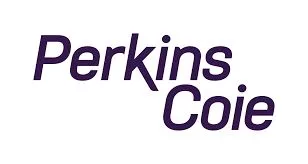The U.S. Department of Labor (DOL) published its final independent contractor rule on January 10, 2024. The final rule revises the Trump administration's interpretation of "employee" under the Fair Labor Standards Act (FLSA) to determine whether a worker is an employee or independent contractor. The final rule, which goes into effect March 11, 2024, represents the latest salvo in the long-running policy battle between Democratic and Republican administrations to address developments in the nature of work. According to the DOL, the final rule represents a return to a traditional, six-part economic reality analysis employed by many courts. In effect, the new rule may make it more difficult for companies to utilize independent contractors than under the Trump-era rule and may result in more misclassification lawsuits alleging that a worker should have been an independent contractor. Such lawsuits can have significant effects on companies, particularly if they are asserted as collective actions under the FLSA. Below, we answer five questions that companies may have about this new DOL rule.
Question 1: What Does the Final Rule Provide?
The 2024 rule establishes that companies should look to the economic reality of the relationship to determine whether a worker is an independent contractor or an employee. According to the DOL Fact Sheet, "[i]f the economic realities show that the worker is economically dependent on the employer for work, then the worker is an employee. If the economic realities show that the worker is in business for themself, then the worker is an independent contractor."
To assess the economic reality of the relationship, the 2024 rule provides six factors to be considered, while emphasizing that none have a predetermined weight, and the outcome ultimately depends on the totality of circumstances. The six factors include:
- Opportunity for profit or loss depending on managerial skill. This factor considers a worker's ability to earn profits or suffer losses through their own independent effort and decision-making. Negotiating pay, deciding to accept or decline work, hiring own workers, purchasing own equipment, engaging efforts to expand one's business (such as through marketing), or having the opportunity to take such actions without company approval suggests a contractor relationship. On the other hand, a worker who simply decides to work more hours or take more jobs when paid on a fixed-rate basis (per hour, day, or job) is not exercising independent skills like an independent contractor.
- Relative investments by the worker and company. This factor examines whether the worker makes investments that are capital or entrepreneurial in nature. The DOL states that the cost of tools or equipment for a specific job or that are imposed by a company are not capital or entrepreneurial investments. The DOL will also compare the worker's investments to the company's investments in its business. In doing so, the DOL will not compare the absolute investments by the worker and the company on a monetary basis nor the company's absolute size but will instead determine whether the worker is making "similar types of investments" that "suggest the worker is operating independently."
- Degree of permanence of the work relationship. This factor looks at the nature and length of the relationship, including whether the work is sporadic or project-based with a fixed ending date, or whether the worker may make a business decision to take on multiple different jobs.
- Nature and degree of the company's control. This factor examines the company's control of hiring, firing, scheduling, prices or pay rates, supervision, discipline, and ability to take actions that limit the worker's ability to work for others. More control weighs in favor of employee status. The DOL states that a company's actions taken for purposes of compliance with laws and regulations do not weigh in favor of an employment relationship if it is for the "sole purpose of compliance," but such actions cannot "go beyond compliance with a specific" law or regulation without affecting the analysis.
- Extent to which the work performed is an "integral" part of a company's business. This factor reviews whether the work is "critical, necessary, or central" to the company's principal business, which would suggest employee status. The DOL stresses that the focus of this factor is not whether the worker is an integral part of the business, but rather whether the work they perform is integral.
- Skill and initiative. This factor considers whether the worker uses both specialized skills and business planning and effort to perform the work and support or grow a business. Specialized skill alone does not indicate that a worker is an independent contractor, but a worker who uses specialized skill "in connection with business-like initiative" suggests the worker is independent.
These factors are not exhaustive, and the 2024 rule allows for consideration of additional factors relevant to the overall question of economic independence. The DOL Fact Sheet provides some position-based examples to help determine whether the worker is an employee or independent contractor under each factor of the economic reality test.
Question 2: How Is This Final Rule Different From the Trump-Era Rule?
The 2024 rule rescinds the rule issued under the Trump administration. As explained in more detail here, the 2021 independent contractor rule identified five economic reality factors, two of which were designated "core factors," to guide the independent contractor inquiry. The new 2024 rule replaces the 2021 rule, which the DOL believes was not fully aligned with court interpretations of the FLSA text or the decades of case law applying the economic reality test.
Question 3: Does This Rule Change Company Practices in States That Utilize the ABC Test for Purposes of the Independent Contractor/Employee Determination?
The DOL Fact Sheet specifies that the new rule "does not adopt an 'ABC' test." Importantly, however, the new rule does not affect state laws with respect to the independent contractor/employee determination, including in those states that have adopted the ABC test, such as California. State laws will continue to apply with respect to state wage-and-hour claims of independent contractor misclassification. It also does not affect the determination of independent contractor status in contexts other than under the FLSA, such as eligibility for state unemployment benefits or under federal tax law.
Question 4: What Practical Steps Should Companies Take in Response to the Final Rule?
Companies who utilize independent contractors should work with experienced counsel to review their independent contractor relationships and address any questions regarding this new DOL rule. Companies should also review and update their independent contractor agreements to ensure compliance with the 2024 rule.
Question 5: Should Companies Expect Litigation To Upend Implementation of the Rule Before the March 11 Effective Date?
Companies face a very complex landscape and should not depend on courts to grant wholesale relief from the rule's requirements. The proposed rule garnered significant attention in political and legal circles. Republican leaders on Capitol Hill grilled Acting Secretary of Labor Julie Su on the changes to the previous rule, and the DOL's effort has been labeled a "War on Independent Contractors." In addition, opponents have challenged every rule related to the FLSA in the last eight years.
Based on this landscape and history, it is not surprising that legal attacks have emerged on at least two fronts. On January 16, 2024, four freelance editors and writers, backed by the Pacific Legal Foundation, filed a complaint in the Northern District of Georgia alleging violations of the Administrative Procedures Act and a "vagueness" violation of the U.S. Constitution. According to the complaint, the Biden rule represents an exercise of arbitrary and capricious agency actions and exceeds DOL's authority under the FLSA. The complaint seeks a return to the Trump-era rule, which the plaintiffs allege provides more certainty of their status as independent contractors. Notably, the complaint does not take a broad attack on the DOL's rulemaking authority because it seeks a court order returning to a previous rulemaking. The second challenge represents a novel attempt to revive previous litigation related to independent contractors. In 2022, various business groups sued DOL in the Eastern District of Texas, seeking to enjoin Biden efforts to rescind the Trump-era rule. Those groups obtained an order that kept the 2021 rule in effect. On appeal, the Fifth Circuit effectively kept the 2021 rule in place and stayed the proceedings while DOL engaged in rulemaking. On January 11, 2024, various business groups filed a motion to reopen the litigation by remanding the matter to district court and asking the district court to rule on the merits of the 2024 Biden rule.
Both efforts seek to enjoin the rule prior to the March implementation date. However, unlike many of the rules enjoined at the end of the Obama administration, it is probable that courts will not issue nationwide injunctions, as such injunctions seemingly fell out of favor by courts in the litigation related to federal COVID-19 vaccine policies.
At minimum, companies should follow the legal developments carefully. However, based on the current landscape, we can expect that a patchwork of rulings will develop, with courts potentially reaching different conclusions on the legality of the rule.
The content of this article is intended to provide a general guide to the subject matter. Specialist advice should be sought about your specific circumstances.






